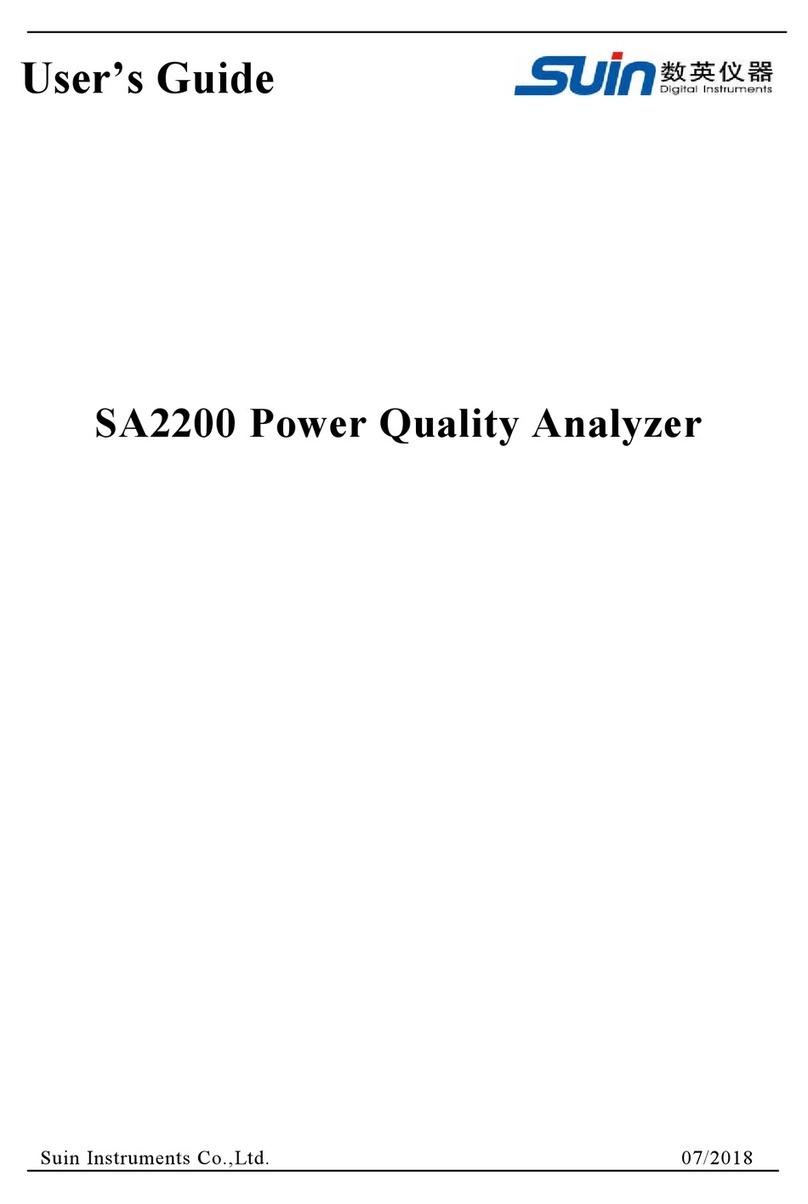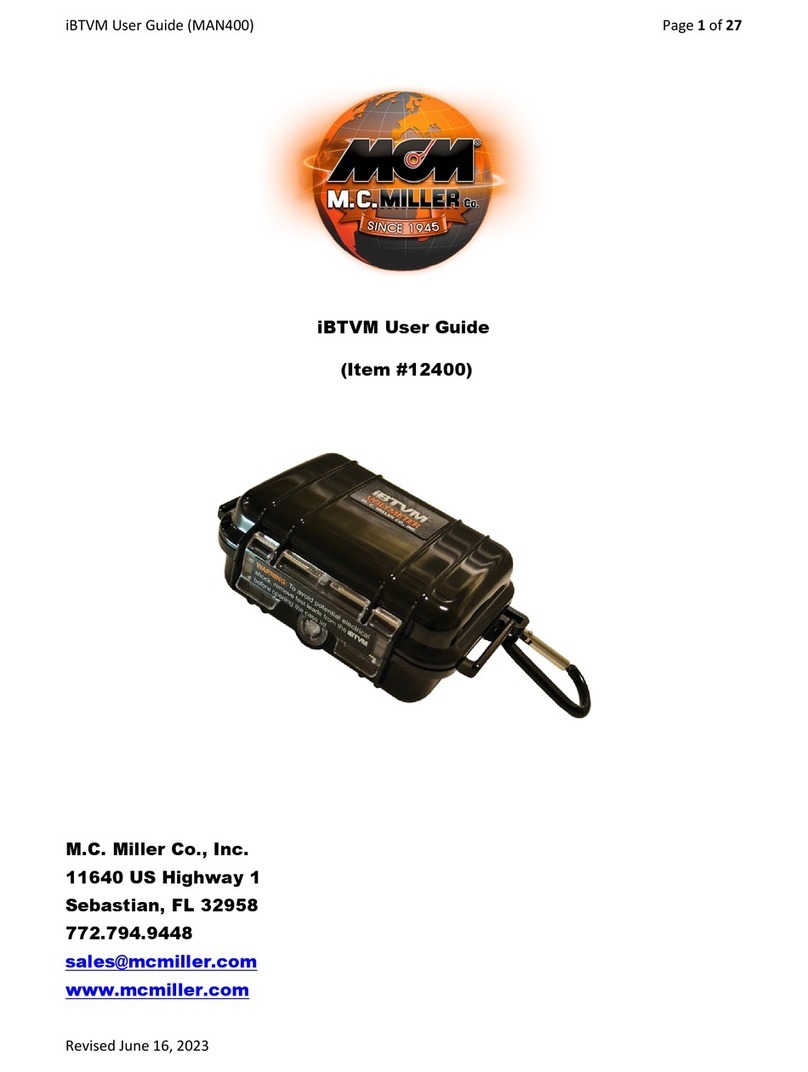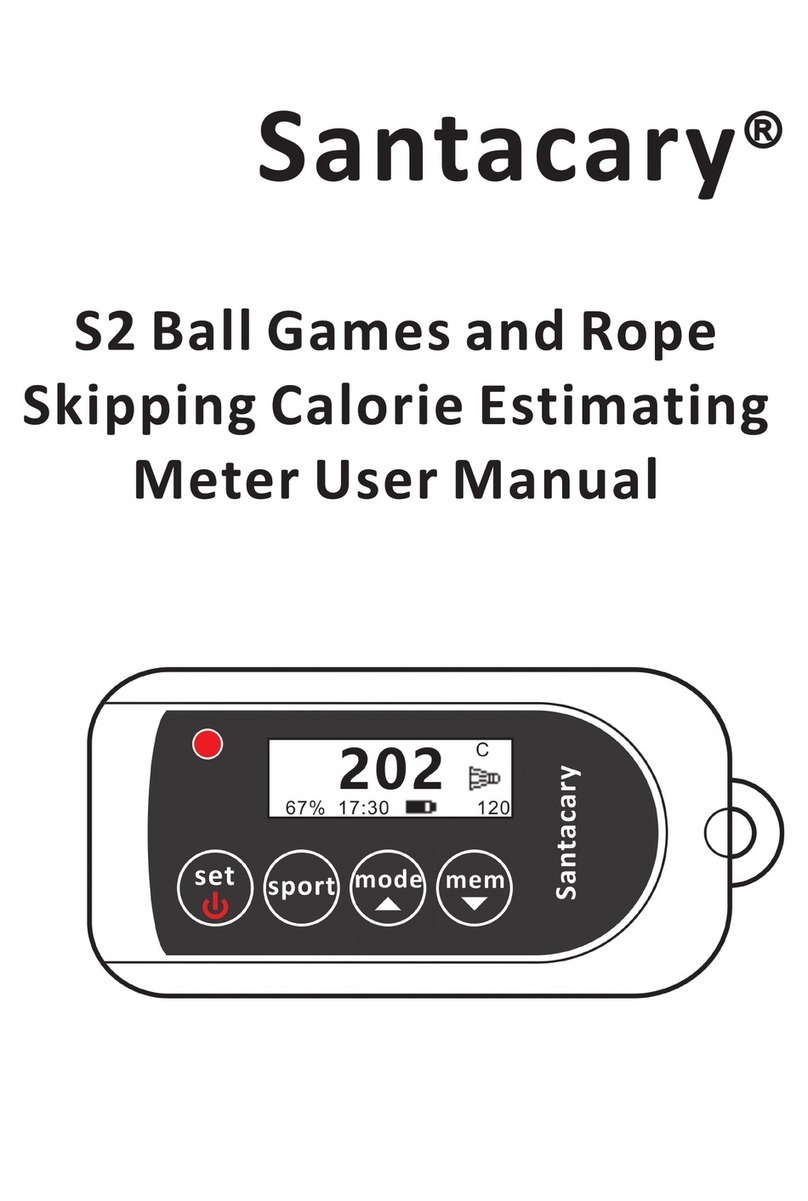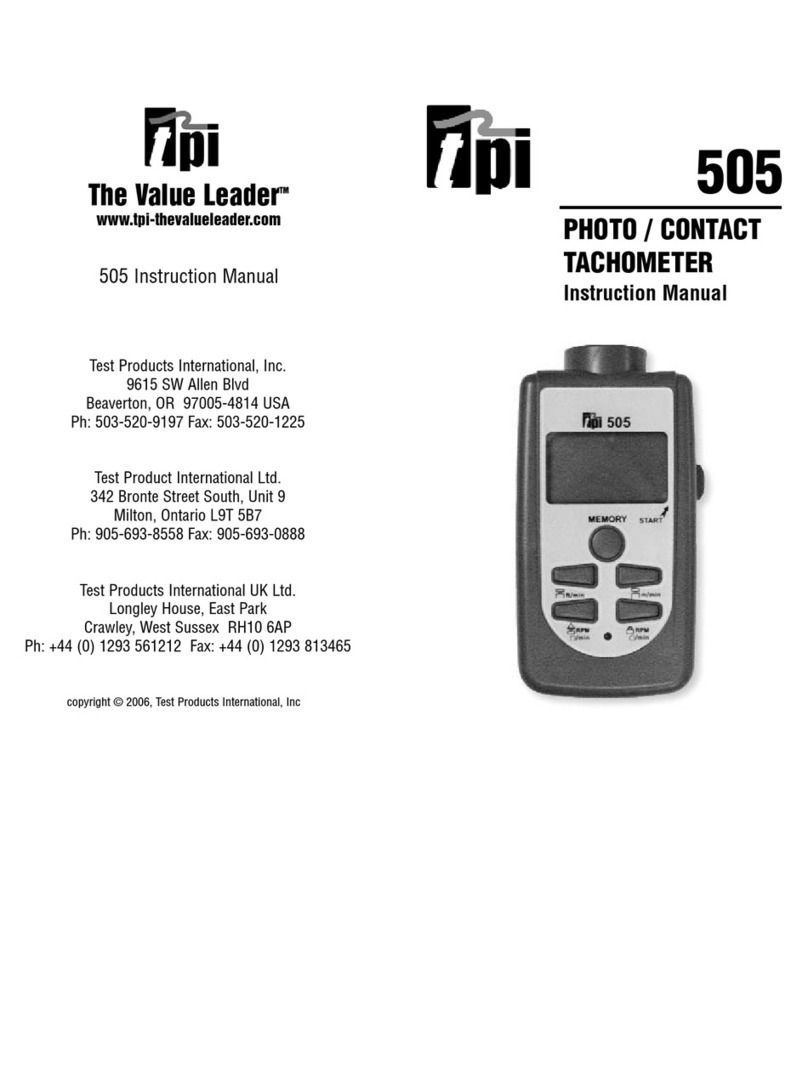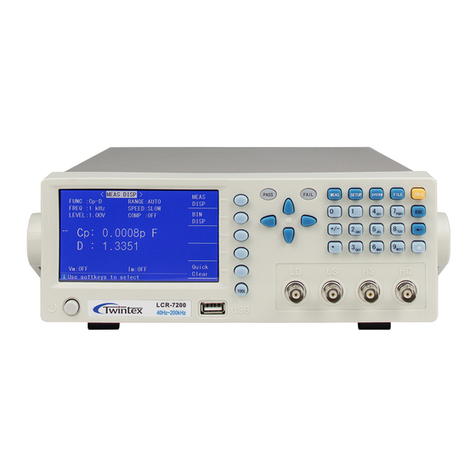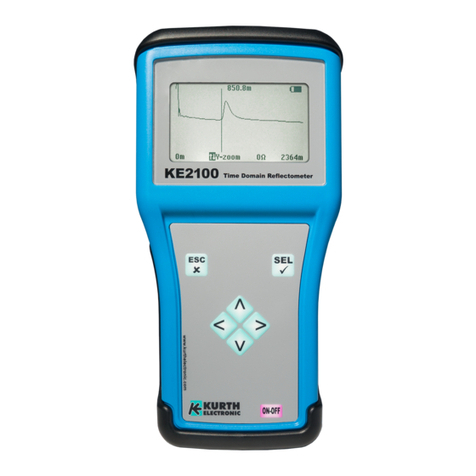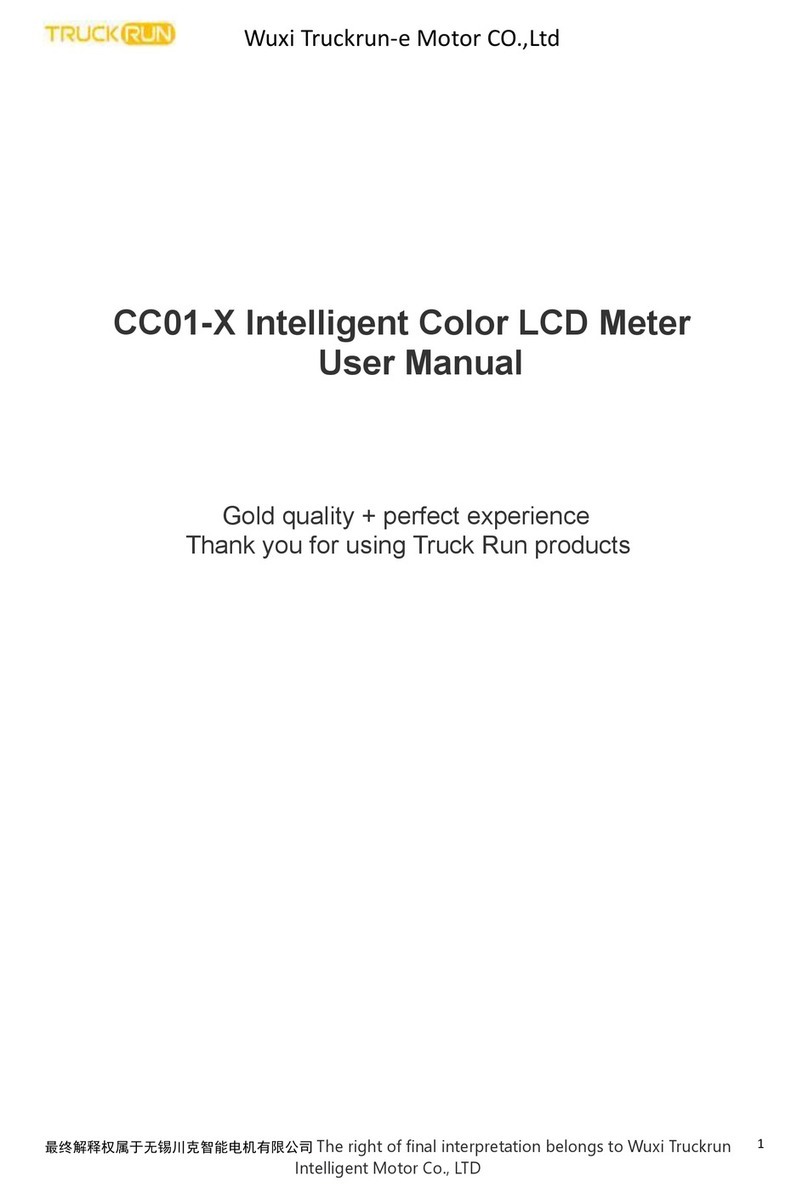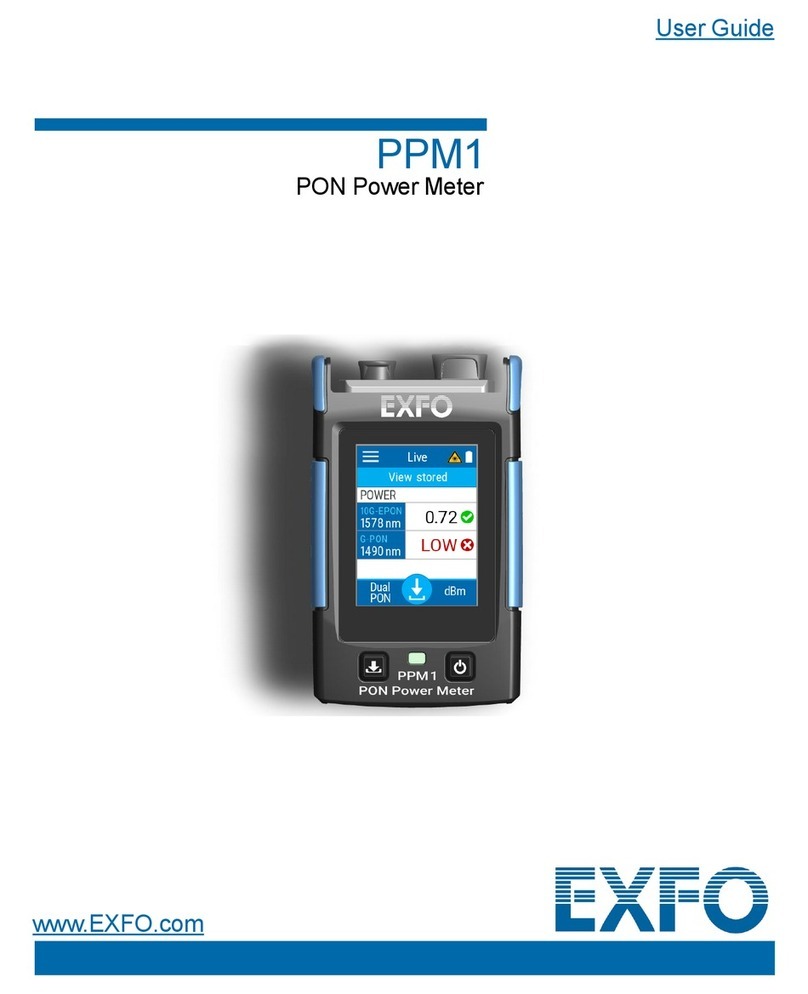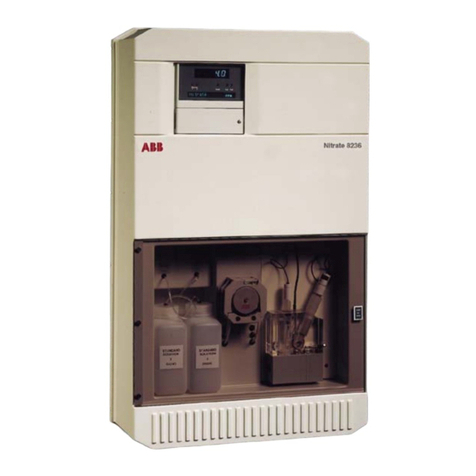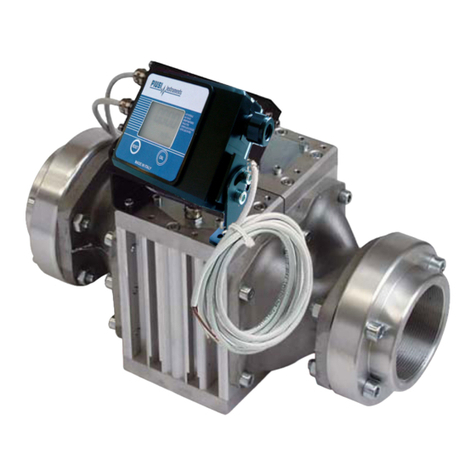Mankenberg DA Series Installation instructions

Original operating manual
Sightglasses, flow indicators and flow
meters
Originalbetriebsanleitung
Schaugläser, Durchflussanzeiger und
Durchflussmesser
DA
DA-4.X.22.3 Issue 01.09.2022 www.mankenberg.com

2
DA-4.X.22.3 Issue 01.09.2022 www.mankenberg.com
Table of contents EN
1 Introduction................................................................................................................................................. 4
2 Intended use ............................................................................................................................................... 4
3 Marking of the fitting .................................................................................................................................. 5
4 Safety instructions ..................................................................................................................................... 5
4.1 General precaution .............................................................................................................................. 5
4.2 Special safety instructions for the plant operator................................................................................. 5
4.3 Special hazards ................................................................................................................................... 6
5 Transport and storage ............................................................................................................................... 6
6 Installation................................................................................................................................................... 7
6.1 General notes ...................................................................................................................................... 7
6.2 Installation preparations....................................................................................................................... 8
6.3 Installation steps .................................................................................................................................. 8
7 Pressure testing the pipeline section....................................................................................................... 10
8 Initial start-up.............................................................................................................................................. 10
9 Normal operation........................................................................................................................................ 10
10 Maintenance................................................................................................................................................ 11
11 Troubleshooting help................................................................................................................................. 12
12 Information on REACH and RoHS ............................................................................................................ 14
12.1 Declaration on the REACH Regulation 1907/2006.............................................................................. 14
12.2 Declaration on the RoHS Directive 2011/65/EU .................................................................................. 14
13 Further information .................................................................................................................................... 14
14 Know How ................................................................................................................................................... 14
14.1 Tusk ..................................................................................................................................................... 14
14.2 Selection .............................................................................................................................................. 14
14.3 Glasses................................................................................................................................................ 14
14.4 Glass qualities ..................................................................................................................................... 14
14.5 Flow direction....................................................................................................................................... 14
14.6 Operating limit...................................................................................................................................... 14
14.7 Indicator flag for one direction ............................................................................................................. 14
14.8 Indicator flag for both directions........................................................................................................... 15
14.9 External indicator ................................................................................................................................. 15
14.10 Ball-type indicator ................................................................................................................................ 15
14.11 Indicator with impeller.......................................................................................................................... 15
14.12 Resistance to media ............................................................................................................................ 15
14.13 Installation............................................................................................................................................ 15
14.14 Operation............................................................................................................................................. 15
14.15 Maintenance ........................................................................................................................................ 15

Inhaltsverzeichnis DE
1 Einleitung .................................................................................................................................................... 16
2 Bestimmungsgemäße Verwendung.......................................................................................................... 16
3 Kennzeichnung der Armatur ..................................................................................................................... 17
4 Sicherheitshinweise ................................................................................................................................... 17
4.1 Allgemeiner Sicherheitshinweis ........................................................................................................... 17
4.2 Spezielle Sicherheitshinweise für den Betreiber.................................................................................. 17
4.3 Besondere Gefahren ........................................................................................................................... 18
5 Transport und Lagerung............................................................................................................................ 18
6 Einbau.......................................................................................................................................................... 19
6.1 Allgemeines ......................................................................................................................................... 19
6.2 Vorbereitung zum Einbau .................................................................................................................... 20
6.3 Schritte beim Einbau............................................................................................................................ 20
7 Druckprüfung des Rohrleitungsabschnitts ............................................................................................. 22
8 Erste Inbetriebnahme................................................................................................................................. 22
9 Normalbetrieb ............................................................................................................................................. 23
10 Wartung ....................................................................................................................................................... 23
11 Hilfe bei Störungen..................................................................................................................................... 24
12 REACH- und RoHS-Auskunft .................................................................................................................... 26
12.1 Erklärung zur REACH-Verordnung 1907/2006.................................................................................... 26
12.2 Erklärung zur RoHS-Richtlinie 2011/65/EU ......................................................................................... 26
13 Weitere Informationen................................................................................................................................ 26
14 Know-How ................................................................................................................................................... 26
14.1 Funktion ............................................................................................................................................... 26
14.2 Auswahl ............................................................................................................................................... 26
14.3 Gläser .................................................................................................................................................. 26
14.4 Glasqualitäten...................................................................................................................................... 26
14.5 Durchflussrichtung ............................................................................................................................... 26
14.6 Ansprechgrenze................................................................................................................................... 26
14.7 Anzeigefahne für eine Richtung........................................................................................................... 26
14.8 Anzeigefahne für wechselnde Richtung .............................................................................................. 27
14.9 Außenzeiger ........................................................................................................................................ 27
14.10 Kugel.................................................................................................................................................... 27
14.11 Flügelrad.............................................................................................................................................. 27
14.12 Medienbeständigkeit............................................................................................................................ 27
14.13 Einbau.................................................................................................................................................. 27
14.14 Betrieb ................................................................................................................................................. 27
14.15 Wartung ............................................................................................................................................... 27
3
DA-4.X.22.3 Issue 01.09.2022 www.mankenberg.com

Original operating manual
Sightglasses, flow indicators and flow meters DA
4
DA-4.X.22.3 Issue 01.09.2022 www.mankenberg.com
1 Introduction
This manual is intended to assist users of a MANKENBERG sightglass, flow indicator or flow meter during
installation, operation and maintenance. Read the manual thoroughly before installing or putting this valve into
service.
caution
Failure to follow the following instructions – particularly the cautionary and warning
notes – may lead to hazards and may invalidate the manufacturer's warranty.
MANKENBERG is at your servíce for any assistance and queries.
See Section Further information [}14] for the addresses.
Technical information is also available at www.mankenberg.de
2 Intended use
A MANKENBERG sightglass, flow indicator or flow meter is a device that is intended exclusively for on-site
inspection of the flow of a medium after it has been installed in a pipeline system. Therefore, one or two plates
of special glass are inserted.
Sightglasses, flow indicators and flow meters are also suitable for two-phase and multi-phase media and for
media tarnished by or intransparent from solids. The MANKENBERG catalogue gives detailed information for
selecting the appropriate type in the section <DA: Sightglasses, Flow indicators>.
The glass quality must fit the medium and the temperature. MANKENBERG designates the supplied glas quality
in the order confirmation.
To observe the flow with the naked eye, the following types are fitted with different installations:
DA [ .].10 Indicator flag;
DA [ .].30 Indicator with impeller;
DA [ .].40 Ball-type indicator (vertical installation only);
The type
DA [ .].00 has no moving installations and is intended for observing gas-liquid- and/or multiphase-mixtures.
With modified type number, some of these indicators are deliverable with two glasses, calibrated scale, two-
directional indicators or flow speeds above 1 m/s.
MANKENBERG planning documents are available to give users precise assistance in selecting and designing
the appropriate fitting, e.g.:
In the section
<DA, accessoires>
<Know-how and selection flow indicators>
<Data sheet DA...>
with technical data and tables of the setting ranges and the dimensions.
MANKENBERG fittings are supplied as standard for screw-mounted or flange-mounted pipeline/tank
connections – also for special connections if required.
The upper limit of the permitted operating data for pressure and temperature is permanently marked on each
fitting supplied.
In the following sections the different construction types are combined under the heading of “sight glasses” apart
from a few sections that only apply to one of the construction types mentioned.

Original operating manual
Sightglasses, flow indicators and flow meters DA
5
DA-4.X.22.3 Issue 01.09.2022 www.mankenberg.com
3 Marking of the fitting
Each fitting bears the following markings as a minimum:
For Marking Remark
Manufacturer MANKENBERG See section Further information [}14] for the
address
Fitting design Sight glass + type
Flow indicator + type
Flow meter + type
Design name as per accompanying
MANKENBERG data sheet
Nominal diameter e.g. DN or G and numerical
value
Numerical value for DN in [mm], for G in [inches]
Nominal pressure PN or Class and numerical
value
Numerical value for PN in [bar], for Class in [lbs/
square inch]
pressure data are displayed as overpressure
above the atmospheric pressure
Max. permitted
temp.
Temperature and numerical
value
Temperatures above 50 °C entail a reduced
pressure resistance. This must be considered for
the corresponding material in accordance with the
DIN EN 1092 standard
Body material e.g. CrNiMo steel CrNiMo steel = high-alloy austenitic steel
Flow direction Indicated by an arrow
The markings (in the case of fittings made of deep-drawn stainless steel, they are etched into the body) should
neither be covered nor painted over, so that the fitting remains identifiable.
4 Safety instructions
4.1 General precaution
The same safety regulations apply to a fitting as to the system into which it is installed. These instructions only
give those safety recommendations that have to be additionally observed for the fitting.
4.2 Special safety instructions for the plant operator
The following requirements for the intended use of a fitting are not the responsibility of the manufacturer but
have to be guaranteed by the user:
The fitting may only be employed for the purpose described in section Intended use [}4].
Only competent specialist personnel may install, operate and service the fitting. Competent as defined in these
instructions refers to persons who, because of their training, specialist knowledge and professional experience,
are capable of correctly assessing and properly executing the work with which they are entrusted and of
recognizing and rectifying hazards.
The pipeline system must be properly designed and installed so that the fitting can be mounted and operated
without any tension.
The fitting must be properly installed in the correct mounting position.

Original operating manual
Sightglasses, flow indicators and flow meters DA
6
DA-4.X.22.3 Issue 01.09.2022 www.mankenberg.com
The usual flow rates should not be exceeded in the pipeline section during continuous operation, and abnormal
operating conditions such as vibrations, unusually high flow rates, etc. should be avoided or – if unavoidable –
clarified with the manufacturer in advance.
The prevailing operating conditions must comply with the limits of the design data stated in the MANKENBERG
order confirmation.
The corrosion protection for the fitting must be adapted to the local environmental conditions.
The fitting must not be coated with thermal insulation.
Detailed notes are provided on some of these prerequisites in the following sections.
4.3 Special hazards
danger of
fatalities
Before a fitting is removed from the system or before a fitting is dismantled but partially
remains in place, the pressure in the system on both the inlet and outlet side must be
completely reduced so that there is no uncontrolled flow of the medium out of the system.
If a glass plate is removed, it must be inserted again as described in section Troubleshooting
help [}12].
Otherwise there is a risk of fracture.
In the case of toxic or hazardous media, the system must be completely drained before the
fitting is removed.
Caution is required with residues that might continue flowing..
attention
If a fitting is removed from a system with a toxic medium and is taken out of the plant:
The valve must be properly decontaminated before repair.
5 Transport and storage
A fitting must be handled, transported and stored with care:
The fitting must be transported and stored in its protective packaging until it is installed.
attention
The fitting has moving internal parts.
Even packaged fittings should be transported smoothly without any shocks.
The glass plate is fragile.
Handle with care so that the glass does not shatter during transport/storage.
attention
In the case of a fitting that can no longer be transported by hand, the lifting gear must be
attached to a suitable position on the housing (branches).
Under no circumstances may the lifting gear be affixed to any attachments.

Original operating manual
Sightglasses, flow indicators and flow meters DA
7
DA-4.X.22.3 Issue 01.09.2022 www.mankenberg.com
» When the fitting is stored prior to installation, it should be kept in closed rooms and protected against
harmful influences such as dirt, moisture and frost.
» In special cases, the fitting is supplied free of oil, grease or silicone and is marked accordingly. A fitting such
as this must not come into contact with oil/grease/silicone during storage and handling (particularly when
subsequently unpacked).
» A MANKENBERG fitting generally has functional and/or sealing parts made of elastomer materials. These
cannot be stored for an unlimited period.
note
ISO 2230 describes the storage conditions for elastomers in detail and specifies the
permissible storage period.
Functional and sealing parts must be replaced well before the storage period expires.
They are available from MANKENBERG as a “service set”. See also section Troubleshooting
help [}12].
note
MANKENBERG fittings of small and medium nominal diameters are largely made of stainless
steel (high-alloy CrNiMo steel).
If, under exceptional circumstances, fittings are stored in a unpacked state, they must be
protected against ferritic dust to avoid corrosion.
note
The fitting is generally not capable of standing alone:
Handle with care so that the fitting does not tip over during transport/storage..
6 Installation
6.1 General notes
The same installation regulations apply to a fitting as to the system into which it is installed. The following
additional notes apply:
Section Transport and storage [}6] should also be observed during transport to the installation site.
The installation site to allow perfect functioning of a fitting should be a section of pipe without any flow
disruptions, without any angles and without any restrictors or shut-off devices close to the fitting, either
upstream or downstream (optimum distance = 10 x DN). If this does not apply, the installation situation should
be checked with the plant operator and/or MANKENBERG.
The statics of the pipeline must be designed so as to take account of the weight of the fitting – particularly those
with an eccentric mass. If required, the pipeline may have to be properly supported on both sides next to the
fitting (or at the fitting itself) – particularly in the case of fittings with a substantial mass and especially if
vibrations are to be expected in the system.
When the fitting is supported, it is important to check that all functioning parts remain capable of moving freely
and are not blocked.
The fitting must not be coated with thermal insulation.
caution
A fitting that is operated at a medium temperature above 130°C needs undisrupted removal of
heat if it is to function perfectly.
Failure to observe this instruction may cause damage to the fitting and hence in the
pipeline system as well.
To protect internal functional parts (e.g. indicator flag) against damage and/or blockages, it may be necessary to
install a strainer and/or filter upstream of the fitting.

Original operating manual
Sightglasses, flow indicators and flow meters DA
8
DA-4.X.22.3 Issue 01.09.2022 www.mankenberg.com
note
The mesh size of the sieve/filter for protecting against aggregates in the pipe section should be
selected by the plant operator according to the operating conditions.
Failure to observe this instruction may impair the function of the fitting and lead to
damage.
6.2 Installation preparations
It is necessary to ensure that a fitting is not installed unless its matches the operating conditions in terms of
function, pressure and temperature, range, body material as well as connection type and dimensions.
danger of
fatalities
No fitting may be operated that does not have a sufficient pressure and temperature range for
the operating conditions – see section Intended use [}4] and markings on the fitting.
The manufacturer MANKENBERG should be consulted in the case of any applications outside
of this range.
Failure to observe this regulation may mean danger to life and limb and may cause
damage to the pipeline system.
Newly installed tanks and pipeline sections must be thoroughly rinsed and cleaned before commissioning.
The corrosion protection for the fitting must be adapted to the local conditions:
important
note
If it is to function perfectly, the fitting must not be installed in a high lying pipe section: In a high
lying section, the observation of the flow may be (considerably) troubled.
If a sight glass may be installed in any desired, only vertical or only horizontal direction is
described in the project (catalogue) data of the sight glasses.
6.3 Installation steps
Fittings should only be finally unpacked at the installation site and inspected for damage prior to assembly.
Damaged fittings must not be installed - under no circumstances those with a damaged glass.
It is necessary to ensure that the covers have been removed from all the connection branches before
installation.
The fitting should be inspected to ensure that it is clean. Interior parts must be free of liquid (e.g. condensate): if
necessary, connecting branches should be cleaned before installation with clean compressed air.
The type and dimensions of the line or tank connections must match the fitting to be installed and be flush with
the connecting surfaces of the fitting as well as in a parallel plane to the fitting itself.
If the fitting is marked with an arrow on the housing, the flow in the pipe section must match the marked
direction of flow.
caution
If installed in the opposite direction to the arrow, the fitting will not perform its intended
function.
The fitting mist be installed without any tension. In the case of an already installed system, the geometry of the
pipeline must match the face-to-face length of the fitting.

Original operating manual
Sightglasses, flow indicators and flow meters DA
9
DA-4.X.22.3 Issue 01.09.2022 www.mankenberg.com
note
It is necessary to ensure that even under operating conditions no tension from the pipeline
is transferred to the fitting.
caution
A MANKENBERG fitting made of "high grade" or "high grade pure" stainless steel (austenite,
e.g. 1.4404 or 1.4435) does not need any surface protection for normal environmental
atmosphere and for normal weather conditions.
External parts of the fitting made of low-alloy or non-alloy materials that are supplied ex-works
with a primer have to be provided with a suitable coating by the customer.
Caution:
Never paint over the marking(s) of the fitting (either etched into the body or on nameplate).
In addition, the following applies to the pipeline connection:
With flanges:
note
The sealing surfaces on the body of the fitting are formed in accordance with the
MANKENBERG order confirmation. The accompanying flange seals are generally not
included in the MANKENBERG supply schedule.
During installation, centre the fitting by means of the flange screws on the mating flange before the screws are
tightened.
With screw-mountings:
note
The connecting surfaces on the body of the fitting are formed in accordance with the
MANKENBERG order confirmation. The required seals are generally not included in the
MANKENBERG supply schedule.
With welding ends:
Properly performed welding must ensure that no significant tension is transferred to either the section of pipeline
or the body of the fitting.
Under no circumstances may the body of the fitting exceed the temperature marked on it; otherwise the sealing
and functional parts will be damaged and the whole fitting will become unserviceable.
caution
When a fitting with a body made of "high grade" or "high grade pure" deep-drawn parts (visible
on the body connection with clamp rings) is welded, the welding joint must be carried out with
special care; it is recommended that the body should be kept cool with a damp cloth.
Failure to observe this regulation may cause damage to the glass plate and/or distortion of the
body. Even the finest crack of the glass plate or 0.1 mm of permanent distortion in the seat
region may render the fitting unserviceable.

Original operating manual
Sightglasses, flow indicators and flow meters DA
10
DA-4.X.22.3 Issue 01.09.2022 www.mankenberg.com
7 Pressure testing the pipeline section
The fitting has already been pressure-tested by the manufacturer. The following points should be observed
when conducting a pressure test on a pipeline section with a sight glass installed:
According to EN 12266-1, the test pressure may under no circumstances exceed 1.5 times the value
indicated on the body with “PN” or “Class”.
If any leakage occurs on the fitting, section Troubleshooting help [}12] should be observed.
note
If the pipe section is flushed and/or dried after assembly or pressure testing, it is necessary to
make sure that the fitting - especially the glass plate - has not been damaged by corrosion or
excessively high temperature.
8 Initial start-up
danger of
fatalities
No fitting may be operated that does not have a sufficient pressure and temperature range for
the operating conditions – see section Intended use [}4] and markings on the fitting. The
manufacturer MANKENBERG should be consulted in the case of any applications outside of
this range.
Failure to observe this regulation may mean danger to life and limb and may cause
damage to the pipeline system.
danger
At the beginning of or shortly after the initial start-up, the sieve or the filter insert of any
installed strainer/filter should be cleaned in order to avoid blocking the strainer/filter.
caution
After the initial start-up:
Check the seals on screw-mounted parts of the body - especially on the glass plate - and
reseal if necessary. Ask MANKENBERG for tightening torque, if necessary.
Observe the relevant notes in section Troubleshooting help [}12] .
9 Normal operation
A properly selected sight glass works automatically and does not need any form of auxiliary energy.
danger of
fatalities
It is necessary to ensure that the materials selected for the parts of the fitting in contact with
media are suitable for the media in use. The manufacturer accepts no liability for any damage
due to corrosion by aggressive media on parts made of unsuitable materials - especially of
unsuitable glass quality.
Failure to observe this regulation may mean danger to life and limb and may cause
damage to the pipeline system and to the fitting.

Original operating manual
Sightglasses, flow indicators and flow meters DA
11
DA-4.X.22.3 Issue 01.09.2022 www.mankenberg.com
note/
danger
The fitting has functional parts that have to remain capable of moving easily. Make sure that
parts in contact with the medium cannot freeze nor become blocked by dirt or deposits.
Observe the maintenance intervals.
Failure to observe this instruction may cause damage to the pipeline system and to the
fitting.
It is recommended that the fitting should be inspected to ensure that it is functioning correctly after each new
start-up.
10 Maintenance
The automatic function of the fitting requires maintenance to ensure that it continues to operate perfectly. It is
important for maintenance work to take place in a planned manner at periodic intervals.
The maintenance plan is a recommendation by the manufacturer MANKENBERG, which should be
supplemented by practical experience gained by the user under the prevailing operating conditions.
MANKENBERG shall assume no liability resulting from improper maintenance and/or repairs.
Sample plan for maintenance work
Type of maintenance Work to be performed Period 1)
Check function Visual inspection:
Check cleanness of the glass plate(s) and free
movement of any installed indicators.
Note: Check, if wiper is installed or can be installed
additionally.
when needed
Check for proper sealing
of the body, the pipe
connection and the
connection flange of the
glass plate.
Visual inspection at least 1x per
month
Replace the seal in the
connection flange of the
glass plate, clean fitting
Remove glass plate, clean glass plate and internal parts,
replace seals as described in section Troubleshooting
help [}12].
at least 1x per year
If installed upstream of
the fitting:
clean strainer
According to the manufacturer's instructions Depends on the
contamination of
the medium

Original operating manual
Sightglasses, flow indicators and flow meters DA
12
DA-4.X.22.3 Issue 01.09.2022 www.mankenberg.com
Type of maintenance Work to be performed Period 1)
Preventive maintenance Dismantle fitting, see section Troubleshooting help
[}12].
Visual inspection functional parts
Replace all parts of the maintenance set 2)
at least 1x per year
1) See comment at the beginning of this section: The time intervals are guides which should be adapted to
match the prevailing operating conditions, the properties of the medium in the system and the user's
experience.
2) Request maintenance set and replacement instructions from MANKENBERG
danger
During maintenance work (apart from visual inspections) the relevant recommendations and
warning notes in section Troubleshooting help [}12] should be observed.
Failure to observe this warning may mean danger to life and limb and may cause
damage to the pipeline system and to the fitting.
When a fitting that has previously been dismantled is being put back into service, the fitting should be checked
for proper sealing capacity and function!
11 Troubleshooting help
Be sure to observe section Safety instructions [}5] when rectifying faults. Spare parts must be ordered with all
the details on the nameplate. Only original parts from the manufacturer MANKENBERG may be installed.
MANKENBERG experts are available to help in rectifying faults as quickly as possible. See section Further
information [}14] for the addresses.
note
If functional or corrosion damage or damage of the glass plate is detected during maintenance
or after a fault:
consult MANKENBERG to find out whether a more suitable fitting is available or whether the
damaged part can be supplied in a better-suited material.

Original operating manual
Sightglasses, flow indicators and flow meters DA
13
DA-4.X.22.3 Issue 01.09.2022 www.mankenberg.com
Type of fault Action
Leakage at a connection body
parts (flange or clamp ring):
(does not apply to the glass
plate!)
reseal connection
Tighten the screws clockwise (tighten flange screws crosswise).
If the screws of the body connection have to be loosened or removed (=
unscrewing in the anticlockwise direction):
Danger of fatalities
To prevent any risk for operating personnel, make sure that this repair
measure is only carried out on a section of pipe that is not under pressure.
Take note of section Special hazards [}6] and then section Installation
[}7].
Leakage at the seal of the
glass plate
replace seal
Depressurize pipe section, loosen flange cap or clamp and drain fitting.
Clean drained fitting and glass plate, - if any are installed – remove, clean
and remount internal parts.
Here all parts of the maintenance set should be renewed.
Only use MANKENBERG original seals for replacing the seals of the glass
plates.
Insert the flange or clamp precisely and carefully tighten the screws (flange
screws crosswise). The seal of the glass plate must not be squashed.
Hot or dangerous media:
Risk of injury
Wear suitable protective clothes.
Functional fault:
The fitting must be repaired
If during cleaning or visual inspection it is found that the glass plate and/or
internal functional parts are damaged and/or display incorrectly:
Repair necessary: damaged parts have to be replaced
If the repair is to be carried out in the customer's workshop:
make a note of all data according to the markings on the fitting and order
the spare parts and necessary instructions from MANKENBERG. See
section Further information [}14] for addresses
or:
Send the fitting to the manufacturer for repair. See section Further
information [}14] for the addresses.

Original operating manual
Sightglasses, flow indicators and flow meters DA
14
DA-4.X.22.3 Issue 01.09.2022 www.mankenberg.com
12 Information on REACH and RoHS
12.1 Declaration on the REACH Regulation 1907/2006
The Mankenberg product provided may contain candidate substances (SVHC) in a concentration of less than
0.1% (w/w) in accordance with the Candidate List (REACH Regulation, Article 33); as per January 2021.
12.2 Declaration on the RoHS Directive 2011/65/EU
Mankenberg products are not electrical or electronic equipment and therefore do not fall within the scope of
RoHS Directive 2011/65/EU (RoHS 2, Article 4, paragraph 1 or Annex I).
13 Further information
You can obtain these instructions, the MANKENBERG data sheets quoted as well as further information –
including English language versions – from the following addresses:
Mankenberg GmbH
Spenglerstrasse 99
D-23556 Lübeck
Phone +49-451 -8 79 75 0
Fax +49-451 -8 79 75 99
E-Mail [email protected]
www.mankenberg.de
14 Know How
14.1 Tusk
Sight glasses and flow indicators indicate media and flow conditions in pipeline systems and plant
14.2 Selection
Sight glasses are monitoring equipment without indicating mechanisms.
Flow indicators have internal components that are set in motion by the flow.
14.3 Glasses
Sight glasses and flow indicators are supplied with one or two glasses. Two glasses enable the user to see
through the medium. If the installation site is dark or if it is difficult to see the glass, a light may be fixed at the
back which allows a better view of the flowing medium.
14.4 Glass qualities
Soda lime glass is used for temperatures up to 150 °C (see DIN 8902); in the case of alkaline media (boiler
water) only up to 100 °C. Maxos glass is used for temperatures up to 280 °C (see DIN 7080).
14.5 Flow direction
Our standard flow indicators are supplied for left-to-right flow; we also supply indicators for right-to-left flow at
the customer´s request. Please state the required flow direction when ordering.
14.6 Operating limit
Flow indicators and flow meters have an operating limit. Below this limit the flow is insufficient to set the internal
components in motion (see Data Sheet).
14.7 Indicator flag for one direction
Flow indicators with flag and reset spring for one flow direction are the most popular type and can be installed in
any position.
Soda lime glasses feature a graduated scale of lines from 1 to 10. This scale allows the flow volume to be
gauged easily and quickly. In many simple applications this type of indicator may be used as an alternative to an
expensive flow meter.

Original operating manual
Sightglasses, flow indicators and flow meters DA
15
DA-4.X.22.3 Issue 01.09.2022 www.mankenberg.com
For the smaller DN (up to G 1 / 25 mm) the indicating flag is supplied without a spring to allow it to indicate even
small volumes. Vertical installation with flow from top to bottom, however, requires a spring.
14.8 Indicator flag for both directions
The centrally mounted flag is deflected towards the flow direction, thus indicating the direction of the flow. The
position of the flag changes as the flow increases or decreases
14.9 External indicator
For turbid or opaque liquids without magnetic contamination you should select a flow indicator with external
pointer (Type 6.12). What has been said above under item “Indicator flag for one direction” applies to this type
of indicator as well.
14.10 Ball-type indicator
The flow moves a ball from its rest position (at the bottom of the housing) to the top. This type of flow indicator
must be installed vertically for flow from bottom to top.
14.11 Indicator with impeller
The flow causes the impeller to rotate. The speed of the impeller allows the flow volume to be gauged. Suitable
for all installation positions as well as all pipeline flow speeds below 1 m/sec.
14.12 Resistance to media
The standard cover seal is not resistant to all media.
14.13 Installation
Please note the flow direction if you want to install a flow indicator with fixed direction of flow.
14.14 Operation
Flow indicators and sight glasses are quite simple units which do not require any special maintenance during
operation. Dirty glasses should be cleaned and the cover seals renewed at the same time.
14.15 Maintenance
Remove the glass for cleaning. For reassembling the screws should be tightened evenly and diagonally using
the specified torque, or the clamp ring seal tightened gently to avoid damaging the glass. We recommend that
you keep a supply of replacement glasses.

Originalbetriebsanleitung
Schaugläser, Durchflussanzeiger und Durchflussmesser
DA
16
DA-4.X.22.3 Stand 01.09.2022 www.mankenberg.com
1 Einleitung
Diese Anleitung soll den Anwender eines MANKENBERG Schauglases, eines Durchflussanzeigers oder
Durchflussmessers bei Einbau, Betrieb und Wartung unterstützen. Lesen Sie diese Anleitung komplett durch,
bevor Sie diese Armatur einbauen oder in Betrieb nehmen.
Achtung
Wenn die nachfolgende Anleitung – insbesondere die Achtungs- und Warnvermerke –
nicht befolgt wird, könnten daraus Gefahren entstehen und die Gewährleistung des
Herstellers unwirksam werden.
Für technische Hilfestellung und Rückfragen steht MANKENBERG zur Verfügung.
Adressen siehe Abschnitt Weitere Informationen [}26]
Technische Informationen auch unter www.mankenberg.com
2 Bestimmungsgemäße Verwendung
Ein MANKENBERG Schauglas, oder Durchflussanzeiger oder Durchflussmesser ist eine Armatur, die
ausschließlich dazu bestimmt ist, nach Einbau in ein Rohrleitungssystem den Durchfluss eines Mediums vor Ort
beobachten zu können. Dazu sind im Gehäuse ein oder zwei Glasscheiben aus Spezialglas eingesetzt.
Schaugläser und Durchflussanzeiger und Durchflussmesser sind auch für Zwei- oder Mehrphasen-Medien
geeignet, und auch für solche, die durch Feststoffanteile getrübt oder undurchsichtig sind. Im Abschnitt <DA:
Schaugläser, Durchflussanzeiger> gibt es Hinweise für die Auswahl des passenden Typs.
Die Glassorte muss dem Medium und der Temperatur angepasst sein. MANKENBERG benennt die gelieferte
Glassorte in der Auftragsbestätigung.
Um die Strömung mit bloßem Auge beobachten zu können, haben die folgenden Baureihen unterschiedliche
Einbauten:
DA [ .].10 Anzeigefahne;
DA [ .].30 Flügelrad;
DA [ .].40 Kugel (Einbau nur senkrecht);
Die Baureihe
DA [ .].00 hat keine beweglichen Einbauten und ist zur Beobachtung von Gas/Flüssigkeits-Gemisch und von
Mehrphasenströmungen geeignet.
Mit abgewandelter Typ-Nr. sind einige Anzeigegeräte auch mit zwei Gläsern, oder mit geeichter Skala, oder für
Anzeige beider Durchflussrichtungen oder für Durchflussgeschwindigkeiten <1m/s lieferbar.
Für die Auswahl und Auslegung der passenden Armatur geben MANKENBERG-Planungsunterlagen dem
Anwender präzise Hilfestellung, z.B.:
Im Abschnitt
<DA, Zubehör>
<Know-How>
<Datenblatt DA...>
mit technischen Daten und Tabellen der Abmessungen.
MANKENBERG-Armaturen werden standardmäßig für verschraubte oder geflanschte Rohrleitungs-/
Behälteranschlüsse geliefert – auf Wunsch auch für Sonderanschlüsse.
Die obere Grenze der zulässigen Betriebsdaten Druck und Temperatur ist auf jeder gelieferten Armatur
dauerhaft gekennzeichnet.
In den nachfolgenden Abschnitten sind diese Armaturen unter der Bezeichnung „Schaugläser“
zusammengefasst, bis auf wenige Abschnitte, die jeweils nur für eine der genannten Ausführungen gelten.

Originalbetriebsanleitung
Schaugläser, Durchflussanzeiger und Durchflussmesser DA
17
DA-4.X.22.3 Stand 01.09.2022 www.mankenberg.com
3 Kennzeichnung der Armatur
Jede Armatur trägt mindestens die folgenden Kennzeichnungen:
Für Kennzeichnung Bemerkung
Hersteller MANKENBERG Adresse siehe Abschnitt Weitere Informationen
[}26]
Armaturenbauart Schauglas + Typ
Durchflussanzeiger + Typ
Durchflussmesser + Typ
Bauartbezeichnung lt. zugehörigem
MANKENBERG-Datenblatt
Nennweite z.B. DN oder G und Zahlenwert Zahlenwert für DN in [mm], für G in [inch] (Zoll)
Nenndruck PN oder Class und Zahlenwert Zahlenwert für PN in [bar], für Class in [lbs/
square inch]
Druckangaben sind Überdruck über dem
Atmosphärendruck
Max. zul. Temp Temperatur und Zahlenwert Temperaturen über 50 °C führen zu einer
Abschwächung der Druckfestigkeit. Diese ist
entsprechend der Norm DIN EN 1092 für den
jeweiligen Werkstoff zu berücksichtigen.
Gehäusematerial z.B. CrNiMo-Stahl CrNiMo-Stahl = hochlegierter austenitischer Stahl
Durchflussrichtung mit Pfeil gekennzeichnet
Die Kennzeichnungen (bei Armaturen aus tiefgezogenem Edelstahl am Gehäuse eingeätzt) sollen weder
abgedeckt noch überstrichen werden, damit die Armatur identifizierbar bleibt.
4 Sicherheitshinweise
4.1 Allgemeiner Sicherheitshinweis
Für eine Armatur gelten dieselben Sicherheitsvorschriften wie für das System, in das sie eingebaut ist. Die
vorliegende Anleitung gibt nur solche Sicherheitshinweise, die für die Armatur zusätzlich zu beachten sind.
4.2 Spezielle Sicherheitshinweise für den Betreiber
Die folgenden Voraussetzungen für die bestimmungsgemäße Verwendung einer Armatur sind nicht in der
Verantwortung des Herstellers, sondern müssen vom Verwender sichergestellt werden:
» Die Armatur darf bestimmungsgemäß nur so verwendet werden, wie im Abschnitt Bestimmungsgemäße
Verwendung [}16] beschrieben ist.
» Nur sachkundiges Fachpersonal darf die Armatur einbauen, bedienen und warten. Sachkundig im Sinne
dieser Anleitung sind Personen, die aufgrund ihrer Ausbildung, Sachkenntnis und Berufserfahrung die ihnen
übertragenen Arbeiten richtig beurteilen, korrekt ausführen und mögliche Gefahren erkennen und beseitigen
können.
» Das Rohrleitungssystem muss fachgerecht so ausgelegt und verlegt sein, dass die Armatur spannungsfrei
montiert und betrieben werden kann.
» Die Armatur muss korrekt und in der richtigen Einbaulage eingebaut sein.

Originalbetriebsanleitung
Schaugläser, Durchflussanzeiger und Durchflussmesser
DA
18
DA-4.X.22.3 Stand 01.09.2022 www.mankenberg.com
» Im Rohrleitungsabschnitt sollen die üblichen Durchflussgeschwindigkeiten im Dauerbetrieb nicht
überschritten werden und abnormale Betriebsbedingungen wie Schwingungen, unüblich hohe
Durchflussgeschwindigkeiten usw. vermieden werden oder – soweit nicht zu vermeiden – im Vorwege mit
dem Hersteller abgeklärt sein.
» Die herrschenden Betriebsbedingungen müssen den Grenzen der Auslegungsdaten, die in der
MANKENBERG-Auftragsbestätigung genannt sind, entsprechen.
» Der Korrosionsschutz der Armatur muss den Umgebungsbedingungen vor Ort angepasst werden.
» Die Armatur darf nicht mit einer Wärmeisolierung umhüllt werden.
In den nachfolgenden Abschnitten sind zu einigen dieser Voraussetzungen detaillierte Hinweise gegeben.
4.3 Besondere Gefahren
Lebens-
gefahr
Vor dem Ausbau einer Armatur aus dem System oder Zerlegen einer Armatur, die teilweise
dort verbleibt, muss der Druck im System Vordruck- und Hinterdruck-seitig ganz
abgebaut sein, damit das Medium nicht unkontrolliert austritt.
Wird eine Glasscheibe ausgebaut, darf sie nur so wieder eingesetzt werden, wie im Abschnitt
Hilfe bei Störungen [}24] beschrieben ist.
Andernfalls besteht Bruchgefahr.
Bei toxischen oder gefährlichen Medien muss das System vollständig entleert sein, bevor die
Armatur ausgebaut wird.
Vorsicht bei Rückständen, die nachfließen könnten.
Achtung
Wenn eine Armatur aus einem System mit toxischem Medium ausgebaut und aus der Anlage
herausgebracht wird:
Die Armatur muss vor der Reparatur fachgerecht dekontaminiert werden.
5 Transport und Lagerung
Eine Armatur muss sorgfältig behandelt, transportiert und gelagert werden:
» Die Armatur ist bis zum Einbau in ihrer Schutzverpackung zu transportieren und zu lagern.
Achtung
Die Armatur hat bewegliche Innenteile.
Auch eingepackte Armaturen stoßfrei transportieren.
Die Glasscheibe ist bruchgefährdet.
Mit Vorsicht handhaben, damit das Glas bei Transport/Lagerung nicht bricht.
Achtung
Bei einer Armatur, die nicht mehr von Hand zu transportieren ist, muss das Geschirr an
geeigneter Stelle am Gehäuse(stutzen) angeschlagen werden.
Das Geschirr darf in keinem Fall an Anbauteilen angeschlagen werden.

Originalbetriebsanleitung
Schaugläser, Durchflussanzeiger und Durchflussmesser DA
19
DA-4.X.22.3 Stand 01.09.2022 www.mankenberg.com
» Bei Lagerung vor Einbau ist die Armatur in geschlossenen Räumen zu lagern und vor schädlichen
Einflüssen wie Schmutz, Feuchtigkeit und Frost zu schützen.
» In Sonderfällen wird die Armatur öl-, fett- oder silikonfrei geliefert und ist entsprechend gekennzeichnet. Bei
Lagerung und Handhabung (insbesondere beim späteren Auspacken) darf eine solche Armatur nicht mit Öl/
Fett/Silikon in Berührung kommen.
» Eine MANKENBERG-Armatur hat in der Regel Funktions- und/oder Dichtungsteile aus Elastomer-
Werkstoffen. Diese sind nicht unbegrenzt lagerfähig.
Hinweis
In ISO 2230 sind Lagerbedingungen für Elastomere detailliert beschrieben und die zulässige
Lagerdauer festgelegt.
Rechtzeitig vor Ablauf der Lagerdauer müssen Funktions- und Dichtungsteile
ausgetauscht werden. Sie stehen als „Wartungssatz“ bei MANKENBERG zur Verfügung.
Siehe auch Abschnitt Hilfe bei Störungen [}24].
Hinweis
MANKENBERG-Armaturen kleiner und mittlerer Nennweiten sind überwiegend aus Edelstahl
(hochlegierter CrNiMo-Stahl) hergestellt.
Diese Armaturen müssen – wenn ausnahmsweise unverpackt gelagert – zum Vermeiden von
Korrosion vor ferritischem Staub geschützt sein.
Hinweis
Die Armatur ist in der Regel nicht standsicher:
Mit Vorsicht handhaben, damit die Armatur bei Transport/Lagerung nicht umkippt.
6 Einbau
6.1 Allgemeines
Für eine Armatur gelten dieselben Einbauvorschriften wie für das System, in das sie eingebaut werden sollen.
Zusätzlich gelten die folgenden Hinweise:
» Für den Transport zum Einbauort ist auch der Abschnitt Transport und Lagerung [}18] zu beachten.
» Der Einbauort für die einwandfreie Funktion der Armatur soll ein strömungstechnisch ungestörter
Rohrabschnitt sein, ohne Krümmer und ohne Drosselstellen/Absperrorgane dicht vor und hinter der Armatur
(optimaler Abstand = 10 x DN). Trifft dies nicht zu, ist die Einbausituation mit dem Betreiber und/oder mit
MANKENBERG abzustimmen.
» Die Statik der Rohrleitung muss so konzipiert sein, dass sie das Gewicht der Armatur – insbesondere
solcher mit exzentrischer Masse – berücksichtigt. Wenn erforderlich, muss die Rohrleitung beidseitig neben
der Armatur (oder die Armatur selbst) fachgerecht abgestützt werden – insbesondere bei Armaturen mit
größerer Masse und insbesondere dann, wenn Schwingungen im System zu erwarten sind.
» Beim Abstützen der Armatur ist zu beachten, dass alle Funktionsteile frei beweglich bleiben und nicht
blockiert werden.
» Die Armatur darf nicht mit einer Wärmeisolierung umhüllt werden.
Achtung
Eine Armatur, die bei einer Medium-Temperatur über 130°C betrieben wird, benötigt zur
einwandfreien Funktion eine ungestörte Wärmeabfuhr.
Missachtung dieser Vorschrift kann Schäden an der Armatur und damit im
Rohrleitungssystem verursachen.
» Um innenliegende Funktionsteile (z.B. die Anzeigefahne) vor Beschädigung und/oder Verstopfungen zu
schützen, kann es erforderlich sein, einen Schmutzfänger und/oder Filter vor der Armatur einzubauen.

Originalbetriebsanleitung
Schaugläser, Durchflussanzeiger und Durchflussmesser
DA
20
DA-4.X.22.3 Stand 01.09.2022 www.mankenberg.com
Hinweis
Die Feinheit des Siebes/des Filtereinsatzes zum Schutz von Aggregaten im Rohrabschnitt ist
vom Betreiber nach den Betriebsbedingungen auszuwählen.
Missachtung dieser Vorschrift kann die Funktion der Armatur beeinträchtigen und zu
Schäden führen.
6.2 Vorbereitung zum Einbau
» Es ist sicherzustellen, dass eine Armatur nur dann eingebaut wird, wenn ihre Funktion, Druck- und
Temperaturbereich, Gehäusewerkstoff, Anschlussart und -abmessungen den Einsatzbedingungen
entsprechen.
Lebens-
gefahr
Es darf keine Armatur betrieben werden, deren zugelassener Druck- und Temperaturbereich
für die Betriebsbedingungen nicht ausreicht – siehe Abschnitt Bestimmungsgemäße
Verwendung [}16] und Kennzeichnungen an der Armatur.
Für eine Anwendung außerhalb dieses Bereiches ist der Hersteller MANKENBERG zu
befragen.
Missachtung dieser Vorschrift kann Gefahr für Leib und Leben bedeuten und Schäden
im Rohrleitungssystem verursachen.
» Neu installierte Behälter bzw. Leitungsabschnitte müssen vor Inbetriebnahme der Armatur sorgfältig gespült
und gereinigt werden.
» Der Korrosionsschutz der Armatur muss den Bedingungen vor Ort angepasst sein:
Wichtiger
Hinweis
Zur einwandfreien Funktion soll der Einbau nicht in einem Hochpunkt eines
Leitungsabschnitts eingeplant sein: Dort könnte angesammelte Luft die Beobachtung der
Strömung (erheblich) stören.
In den Projekt-Unterlagen der Schaugläser ist beschrieben, ob ein Schauglas beliebig oder nur
in der Stellung waagerecht oder senkrecht eingebaut werden kann.
6.3 Schritte beim Einbau
» Armaturen sollten erst auf der Baustelle endgültig ausgepackt und vor der Montage auf Beschädigungen
untersucht werden. Beschädigte Armaturen dürfen nicht eingebaut werden auf keinen Fall solche, deren
Glasscheibe beschädigt ist.
» Es ist sicherzustellen, dass die Abdeckungen an allen Armaturenstutzen vor Einbau entfernt wurden.
» Die Armatur ist danach auf Sauberkeit zu prüfen. Innenteile müssen frei von Flüssigkeit (z.B.
Kondenswasser) sein: Falls erforderlich, Anschlussstutzen vor Einbau mit sauberer Druckluft ausblasen.
» Art und Abmessungen der Leitungs- oder Behälteranschlüsse müssen zu der einzubauenden Armatur
passen und mit den Anschlussflächen der Armatur fluchten und planparallel dazu sein.
» Ist die Armatur am Gehäuse mit einem Pfeil gekennzeichnet, muss der Durchfluss im Rohrabschnitt mit der
gekennzeichneten Durchflussrichtung übereinstimmen.
Achtung
Bei Einbau entgegen der Pfeilrichtung erfüllt die Armatur nicht ihre bestimmungsgemäße
Funktion.
This manual suits for next models
8
Table of contents
Languages:
Popular Measuring Instrument manuals by other brands
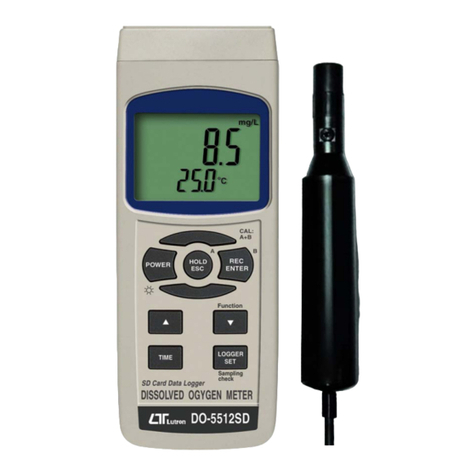
Lutron Electronics
Lutron Electronics DO-5512SD Operation manual

Fluke
Fluke 772 Calibration manual
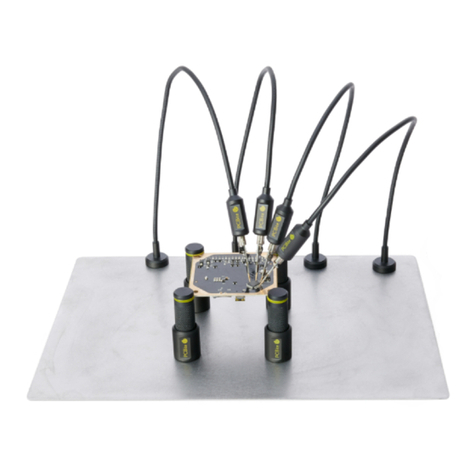
Sensepeek
Sensepeek SP10 user guide
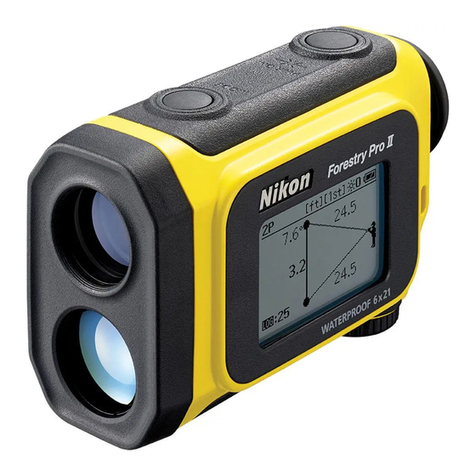
Nikon
Nikon Forestry Pro II instruction manual

Bacharach
Bacharach CO2 Analyzer 3150 Operation & maintenance instructions

Ocean Optics
Ocean Optics NeoFox Installation and operation manual
